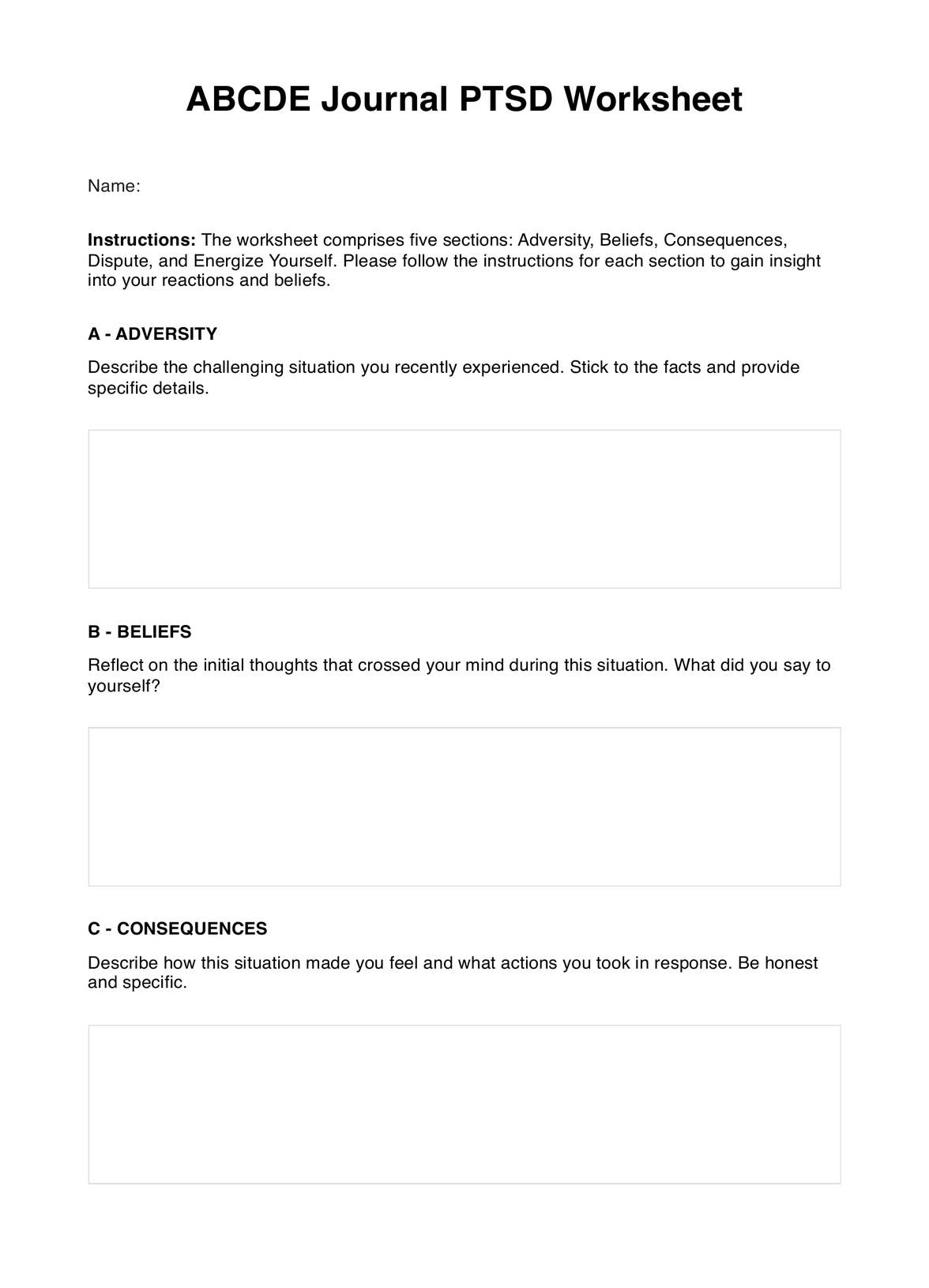Completing the worksheet varies depending on the situation's complexity and the individual's reflection process but typically ranges from 15 minutes to an hour.

ABCDE Journal PTSD Worksheet
Learn about healing and insight with the ABCDE Journal PTSD Worksheet. Gain control over your reactions and beliefs. Download now for personal growth.
Use Template
ABCDE Journal PTSD Worksheet Template
Commonly asked questions
It can help individuals gain insight into their reactions and beliefs by providing a structured framework for self-reflection, promoting emotional processing, and personal growth.
It is perfect when individuals face challenging situations, particularly those related to trauma, stress, or emotional difficulties, and want to better understand and cope with their reactions.
EHR and practice management software
Get started for free
*No credit card required
Free
$0/usd
Unlimited clients
Telehealth
1GB of storage
Client portal text
Automated billing and online payments











